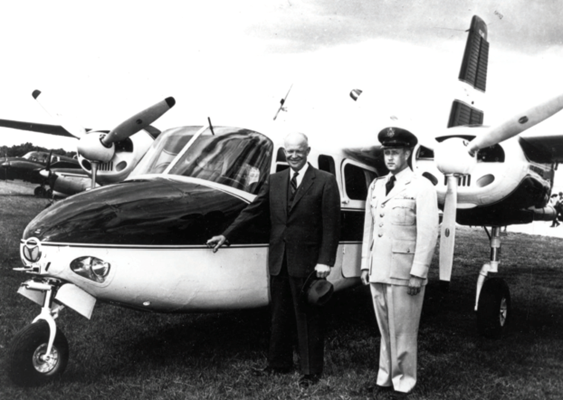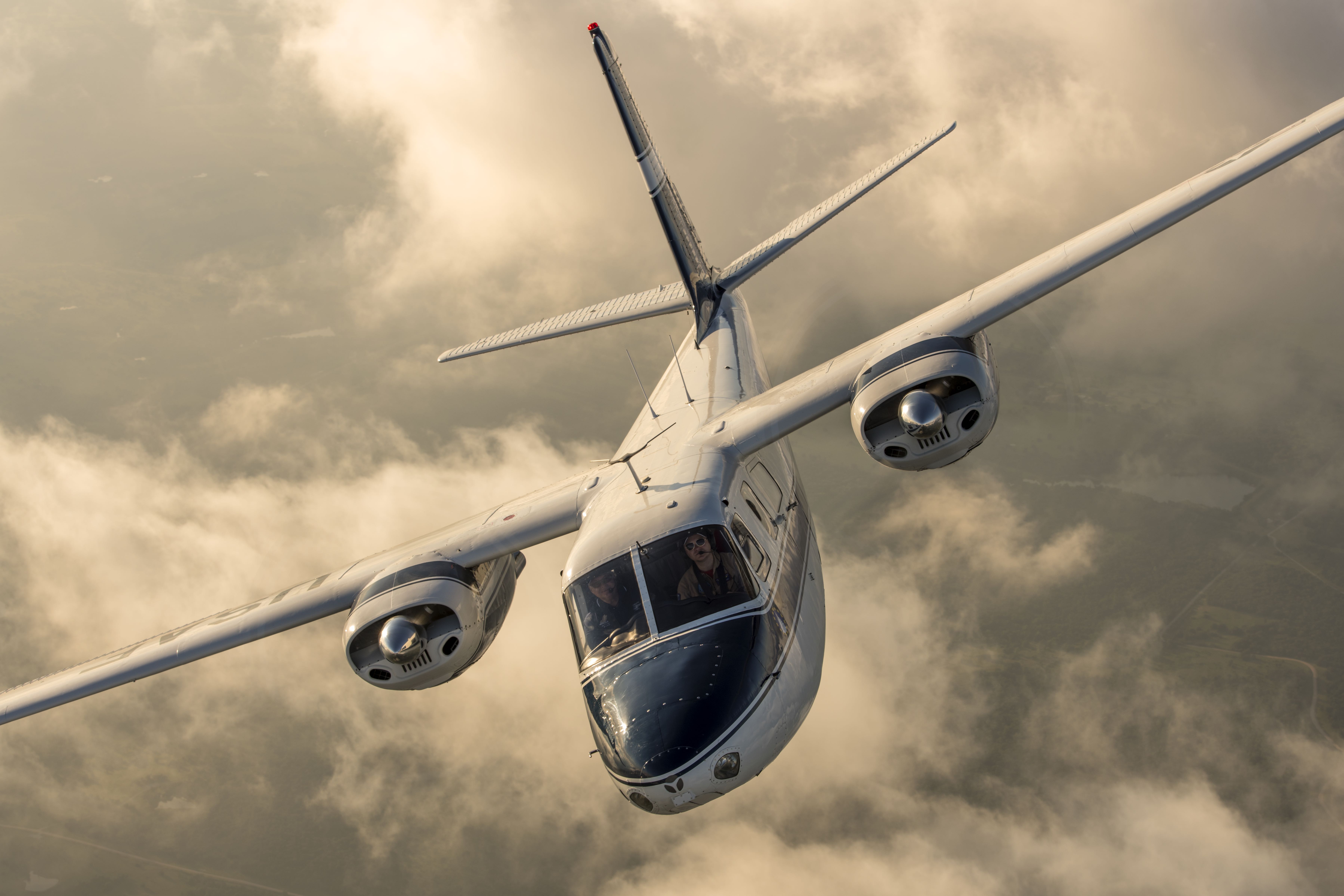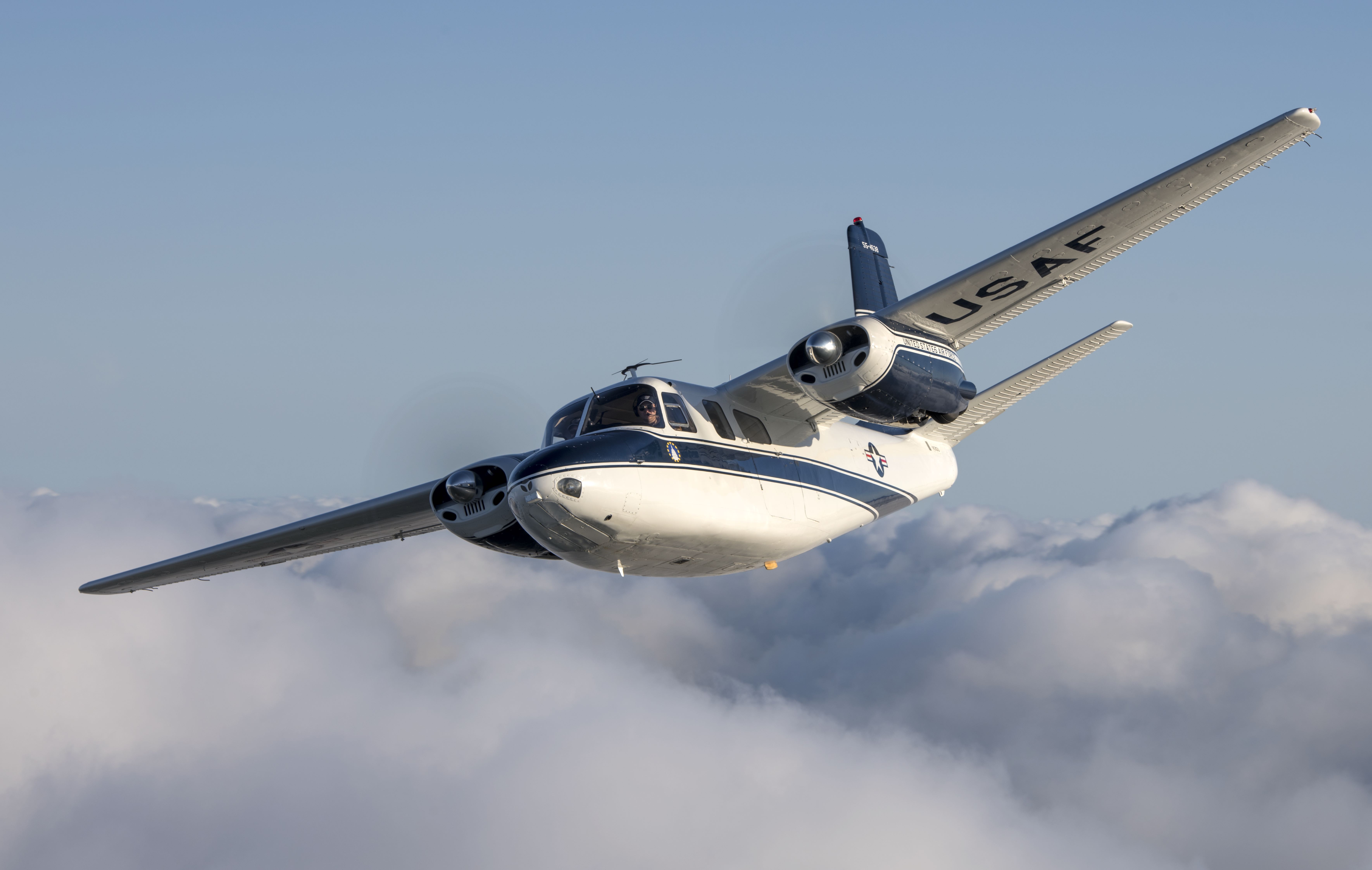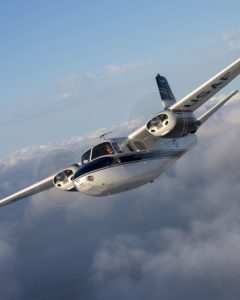LB-26 IKE’S BIRD -Joins the Commemorative Air Force Ghost Squadron
AIR FORCE ONE
Today presidents are seen boarding Marine One, the presidential helicopter, or any of the incarnations of state-of-the-art Air Force One jetliners. Transporting the Commander in Chief is serious business and air travel became the preferred method in the 1940s when a C-87 Liberator Express named Guess Where II was configured for use as presidential transport, but its poor safety record made it a no go. Next up a C-54 Skymaster named Sacred Cow was employed. Sacred Cow was configured with sleeping quarters, a radio telephone, and even an elevator. It flew Presidents Franklin D. Roosevelt and Harry S. Truman for several years. Truman replaced Sacred Cow in 1947 with a DC-6 named Independence that was outfitted with all the latest safety features, as well as more office capabilities.


In 1953, when President Dwight D. “Ike” Eisenhower took office, he refused to use the Independence. Although helicopters were in use at the time, they were still new and considered unsafe. Eisenhower ordered two Lockheed Constellations as his primary aircraft and named them Columbine II and Columbine III. The name “Air Force One” was first used during a flight on Columbine II, when the aircraft entered the same airspace as a commercial flight using the same flight number. (Although Air Force One was not made official until 1962.)
During Eisenhower’s time in office he took many short trips from the White House to his farm near Gettysburg, Pennsylvania. For this he needed an aircraft that could negotiate the 2,500-foot grass strip runway at the farm. He told his chief pilot, Air Force Col. William Draper, to conduct an evaluation to find a new airplane that was suitable to go back and forth to the farm, and to make other short trips.
Draper’s solution was the Aero Design and Engineering Company’s Commander aircraft. It had a sleek design that offered a cruising speed of around 200 miles per hour, a low-slung fuselage with an entry step only one foot off the ground, and wide cabin door. These were all features of critical importance especially during Eisenhower’s recovery from a heart attack he suffered in 1955.
During Eisenhower’s administration the Air Force acquired a few Aero Commanders for White House use, the last two being turbocharged examples for improved performance. Eisenhower really enjoyed the aircraft. A pilot himself, trained in World War II, Eisenhower would sometimes walk into the cockpit and take the controls, enjoying the opportunity to fly. By the end of Eisenhower’s second term in office, Aero Commanders were known as Ike’s Bird or even “The Smallest Air Force One.”
Eisenhower eventually added the larger Boeing 707 to his fleet. By the time the Kennedy administration took office the fleet Air Force Ones was all helicopters and jets. Ike’s Birds were no longer needed and were auctioned by the military in the 1960s.

IKE’S BIRD –THE PERFECT AIR PLANE FOR THE JOB
In 1997, Scott Main, an airline captain from Fort Lauderdale, Florida found one of Ike’s Birds and bought Aero Commander LB-26 55-4638 and restored it to its original Air Force One condition. Main spent many years on the restoration, even meticulously matching the 1950s USAF white and blue paint scheme. In 2019, Main decided to sell the aircraft to the Commemorative Air Force, where this rare historic warbird will be given a new mission. A group of CAF Colonels formed the Ike’s Bird Sponsor group in order to support the aircraft’s maintenance and operations.
The members of the Ike’s Bird Sponsor Group saw great opportunity in the aircraft as a way to address growing concerns that veterans, especially World War II veterans, that often have trouble riding on CAF aircraft and comfortably traveling to events. The accessibility afforded by Ike’s Bird makes it the perfect aircraft for transporting veterans in style.
Six-plus decades later, a restored aircraft from that White House fleet will again carry VIPs: this time, America’s wounded warriors and mobility-challenged veterans. This aircraft will participate at aviation events and provide youth and veterans the opportunity to ride on this former “Air Force One.”

“Many veterans today are older or disabled and can’t climb into World War II aircraft. They get left behind because of bad knees, arthritis, missing limbs, or lack of financial resources. We have seen veterans walk away dejected and disappointed because they can’t afford it, or just can’t physically do it anymore,” says CAF Col. Gerald Oliver, of Midlothian, Texas, the Aircraft Director of the Ike’s Bird Sponsor Group. “It was really important that we acquire the aircraft before a non-flying museum did. Our concern was that it would be made into a static museum piece. We had a plan for this historic warbird. It is really the perfect aircraft for what we are trying to do because it has easy access, seven comfortable seats and low operating costs.”
“This is something that, to my knowledge, is new to the CAF,” says fellow Ike’s Bird Sponsor Group member Jeff Skiles, a longtime Aero Commander pilot who also volunteers to pilot FIFI, the CAF’s B-29 Superfortress, “There’s certainly people out there who would be willing to contribute and sponsor this kind of concept, particularly when it comes to an airplane and veterans. I think it’s going to be an interesting kind of new direction for the CAF, and I’m encouraged to think that it probably could be a new direction for other aircraft within our fleet,” says Skiles, who lives in Madison, Wisconsin.
Ike’s Bird is scheduled to appear at 2019 AirVenture in Oshkosh, Wisconsin, Skiles will be manning the Ike’s Bird information booth. The aircraft will then travel on to support the CAF AirPower History tour with stops in Oklahoma, Missouri, and Arkansas before returning to CAF Headquarters to support fall and winter events.
Rides on Ike’s Bird can be booked online. The aircraft comfortably seats four passengers and prices range from $200 – $275 per seat or $875 to reserve the entire aircraft for a flight. Proceeds from the rides go right back into supporting the program to fly veterans and young students at no cost.


